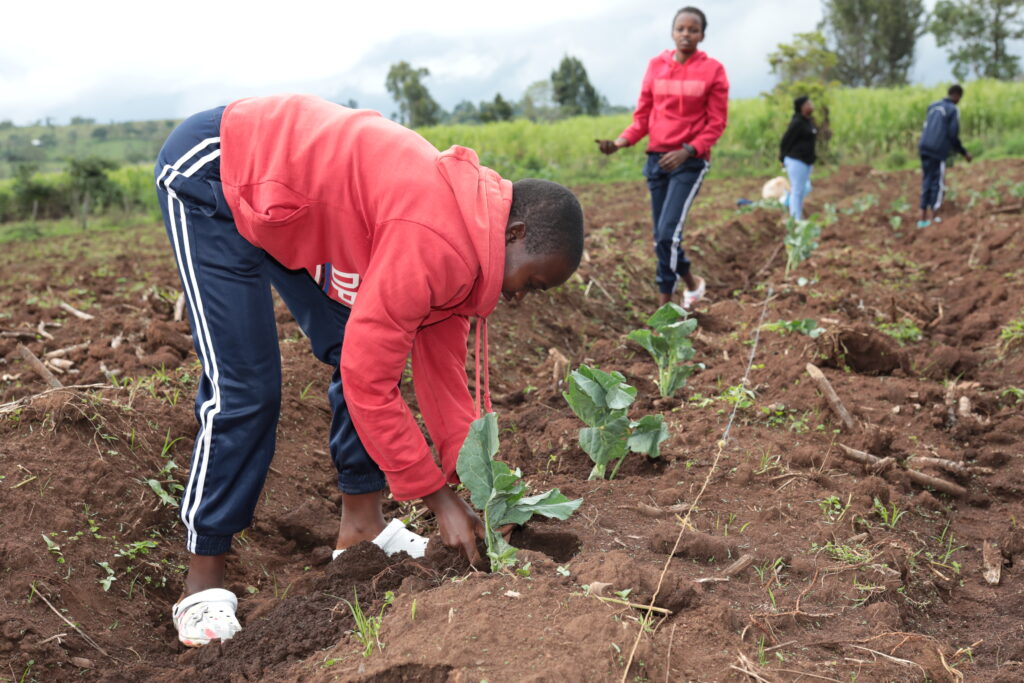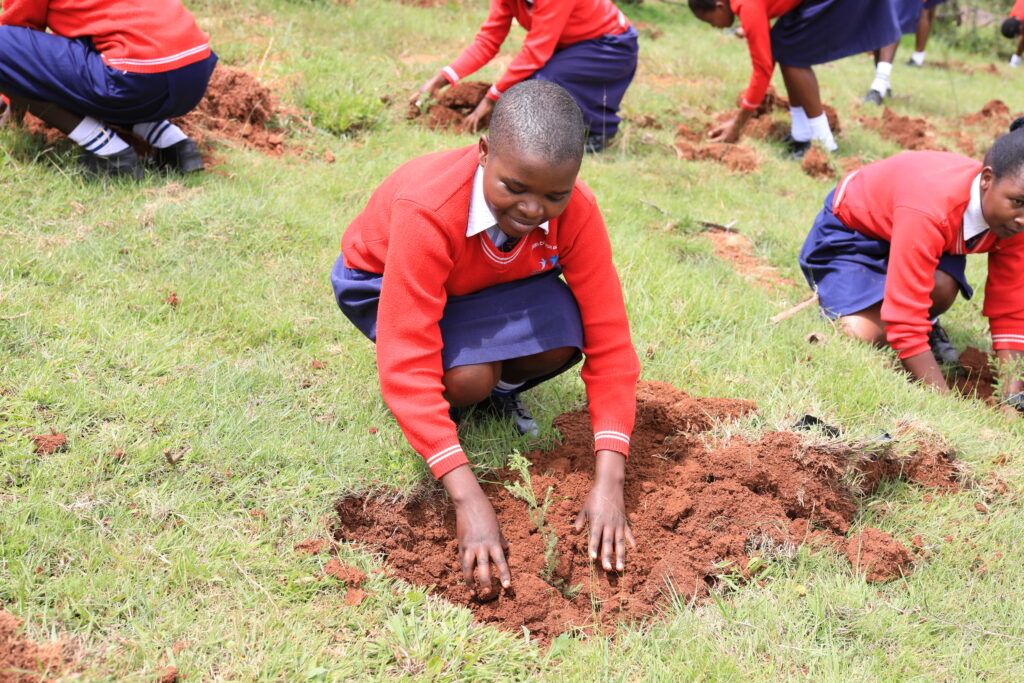Kenya is a microcosm of the global climate crisis. Extreme weather events — including simultaneous drought and flash flooding — have become more frequent and destructive, hitting rural communities like ours the hardest. In response, Kakenya’s Dream is promoting climate resilience and empowering the next generation of environmental leaders.
Since late 2020, Kenya has been consumed by a severe and prolonged drought, the country’s worst in four decades. Over the course of six consecutive failed rainy seasons, nationwide water shortages have led to mass harvest failures and livestock deaths (with about 1 in 5 livestock animals across the country perishing from a lack of food and water). This has not only destroyed countless livelihoods, but also crippled domestic food production; as a result, a projected 5.4 million Kenyas currently face acute, life-threatening food insecurity.
These conditions are especially dangerous for women and girls. Relative to men, they lack adequate access to coping mechanisms (such as credit, land tenure rights, and decision-making power) and consequently face heightened risks of child marriage, female genital mutilation, and gender-based violence.
In March of this year, however, seasonal rains finally arrived in Kenya, signaling a potential end to the three-year drought. But this, too, was extreme: abrupt heavy rainfall has caused sporadic flash flooding across the country, even in the driest northern plains. These floods have destroyed entire communities overnight, leaving thousands of Kenyans displaced and several dead. For many, the long-awaited rainfall has done more harm than good, even deepening food insecurity by killing livestock and washing away critical infrastructure.
The cause of these extreme weather patterns was the subject of a recent report from World Weather Attribution. The culprit, unsurprisingly, was climate change. If the atmosphere were 1.2 °C cooler (or in other words, if global temperatures remained at pre-industrial levels), the drought would never have happened, according to the report. (Here’s a list of recent natural disasters that have also been attributed to climate change.) The report also estimates that rising temperatures make severe droughts at least 100 times more likely.
The accelerating climate crisis has sweeping implications for food security, education, health, and gender equality. The world’s poorest countries will be hit the hardest — even though they are responsible for a relatively small share of greenhouse gas emissions — which makes climate education and resilience training critical for the next generation of Kenyans. As part of Kenya’s new national Competency-Based Curriculum (CBC), we’re equipping our students with the practical skills necessary to meet the challenge. Here’s how:
Sustainable Agriculture
Last year, drought-induced food shortages caused the price of local produce to skyrocket. So we decided to grow our own: starting in December, our students began cultivating a one-acre parcel of land on the KCE II campus. At the same time, under the instruction of our agriculture teacher, Cyrene Musango, they created a nursery and planted spinach, cabbage, onion, peppers, butternut squash, coriander/cilantro, and carrots. They later added sucker-grown kale, which is a variety preferred for its drought tolerance.

Once the rains began in March, the students transplanted the vegetables from the nursery to the garden. They learned to gap the crops and weed the field. Harvesting began in April and provided the entire school with a bounty of healthy vegetables. As the project continues, it will sustainably replenish the school’s food supply while teaching self-sufficiency and adaptive agriculture to our students.
Tree Planting
Reforestation is a central component of Kenya’s climate resilience strategy. The government plans to plant 15 billion trees by 2032, a move aimed at improving carbon capture, restoring biodiversity, and protecting water catchment zones (which increase water access and mitigate the effects of drought).
On campus, our students are doing their part. Over the past two years, 12th graders at KCE II have planted more than 1,000 tree seedlings around the school. Like the sucker-grown kale, these seedlings (from the Grevillea tree) are popular in the region for their drought-resistance and climate-friendliness. As part of our tree-planting campaign, students are also encouraged to share what they’ve learned with their families and undertake similar tree-planting projects at home.

On the heels of unprecedented weather extremes and in the face of worsening climate change, environmental resilience is more important than ever. Adaptive agriculture is key to combating ongoing food and water shortages — but our climate programs extend much further than that. Our students are also leading community cleanups, creating weather forecast stations, and monitoring air pollution around campus, which you can learn more about here. Watching our students develop a passion for sustainability and conservation inspires great confidence that they will become good stewards of the earth for the generations ahead.
